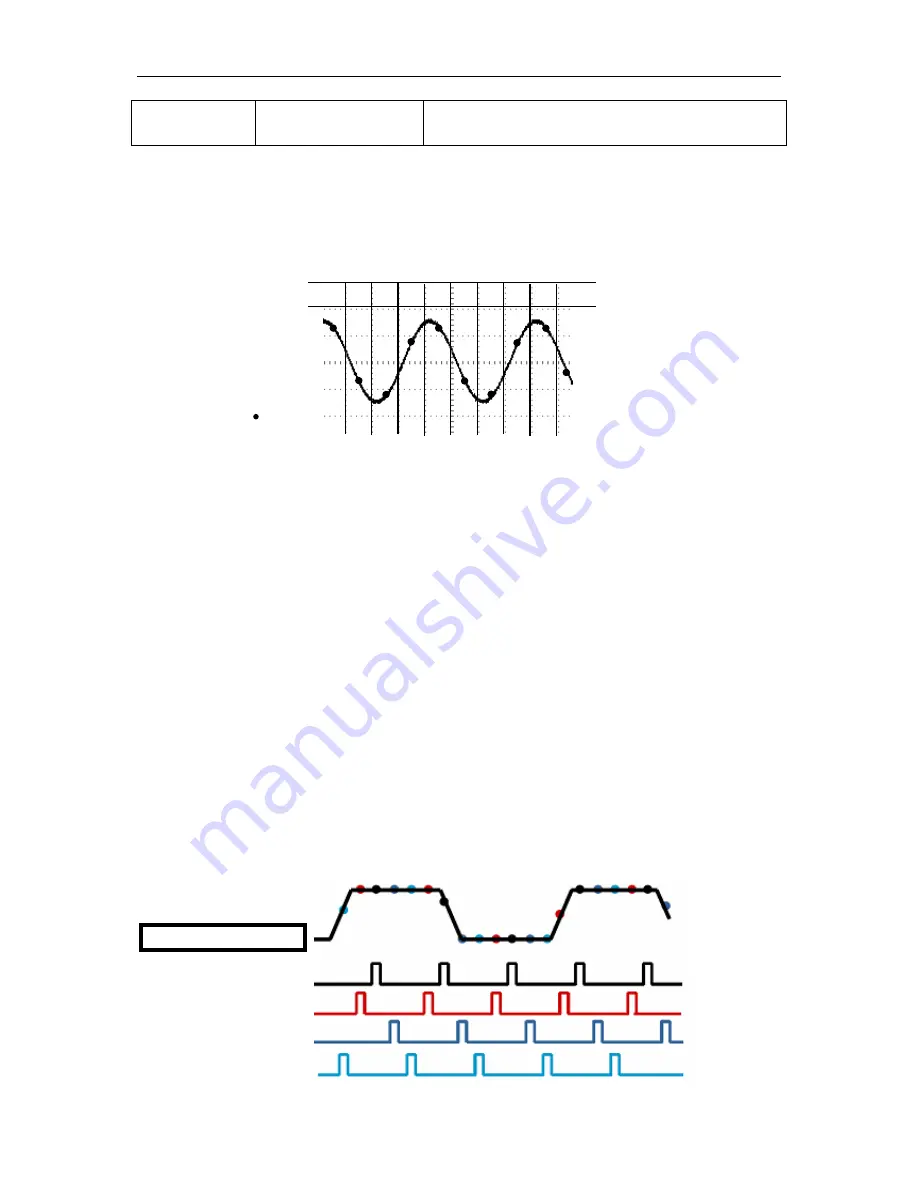
Basic Operation
DSO1000B Series HandHeld Oscilloscope User Manual 32
Memory Depth
(Real Time)
4K, 40K, 512K, 1M
Select the memory depth for different board models.
Normal:
For the oscilloscope model with the bandwidth of 100MHz, the maximum sample rate is
1GS/s. For time base with insufficient sample rate, you may use the Sine Interpolation Algorithm to
interpolate points between sampled points to produce a complete waveform record (4K by
default).
Peak Detect:
Use this mode to detect glitches within 10ns and to limit the possibility of aliasing.
This mode is valid at the TIME/DIV setting of 4µs/div or slower. Once you set the TIME/DIV setting
to 4µs/div or faster, the acquisition mode will change to Normal because the sample rate is fast
enough that Peak Detect is unnecessary. The oscilloscope does not display a message to tell you
that the mode has been changed to Normal.
Average:
Use this mode to reduce random or uncorrelated noise in the signal to be displayed.
Acquire data in Normal mode and then average a great number of waveforms. Choose the
number of acquisitions (4, 16, 64 or 128) to average for the waveform.
Stopping the Acquisition:
When you are running the acquisition, the waveform display is live.
Stop the acquisition (press the RUN/STOP button) to freeze the display. In either mode, the
waveform display can be scaled or positioned by vertical and horizontal controls.
Equivalent Acquisition:
Just repeat the Normal acquisition. Use this mode to take a specific
observation on repeatedly displayed periodic signals. You can get a resolution of 40ps, i.e.
25GSa/s sample rate, which is much higher than that obtained in real-time acquisition.
The acquisition principle is as follows.
Input repeated signals
First Acquisition
Second Acquisition
Third Acquisition
Fourth Acquisition
Sample Points
Normal Acquisition Intervals
8
3
7
2
4
5
6
1
9 10
Normal Mode Acquires a Single Sample Point in Each Interval






























